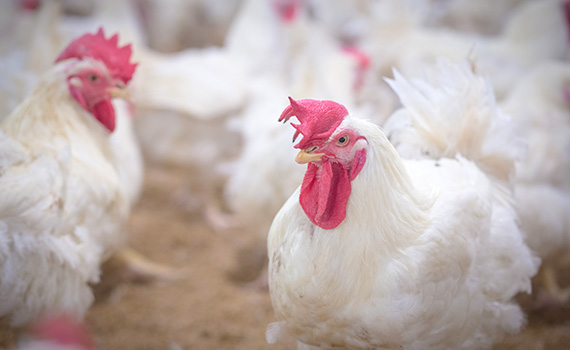Woody breast continues to baffle researchers
Woody breast is a relatively new disease that adversely affects meat quality during processing, but poultry scientists still don’t understand its underlying causes, said Luke Borst, DVM, PhD, a veterinary anatomic pathologist at North Carolina State University.
There may be some genetic and management factors at work — the size of the birds and how quickly they’re grown, for instance — and possibly an infectious-disease component because the vascular lesions in affected birds are the types caused by viruses, Borst told Poultry Health Today.
Woody breast doesn’t adversely affect bird behavior, nor do birds with the disease present with clinical manifestations such as lameness or respiratory disease. Nevertheless, Borst considers it a disease.
He noted that microscopic examinations of broiler-breast lesions show inflammation, as well as replacement of muscle fiber with fat and scar tissue. These lesions suggest an infectious agent, Borst explained.
The rapid growth rate of today’s birds is contributing to woody breast, Borst believes. He once conducted a study comparing modern broilers to slow-growth broilers with 1950s’ genetics. The slow-growing birds were one-sixth the size of the modern broiler and still showed the vascular and myofiber lesions associated with the condition, but they never developed “woody breasts,” probably because they don’t get as big as modern broilers, he said.
There’s an important connection between woody breast and nutrition, because muscle fibers require a lot of nutrients. Anything that disturbs the nutrient balance — energy, calcium, phosphorous and antioxidants — can negatively affect muscle health, he said.
Borst emphasized that it’s difficult to make specific recommendations on how to control woody breast because the exact causes aren’t known. However, anything that can be done to support muscle health and prevent fast-growing birds from getting “super-muscled” will be helpful in preventing the disease.
Posted on April 12, 2018
 We’re glad you’re enjoying
We’re glad you’re enjoying










